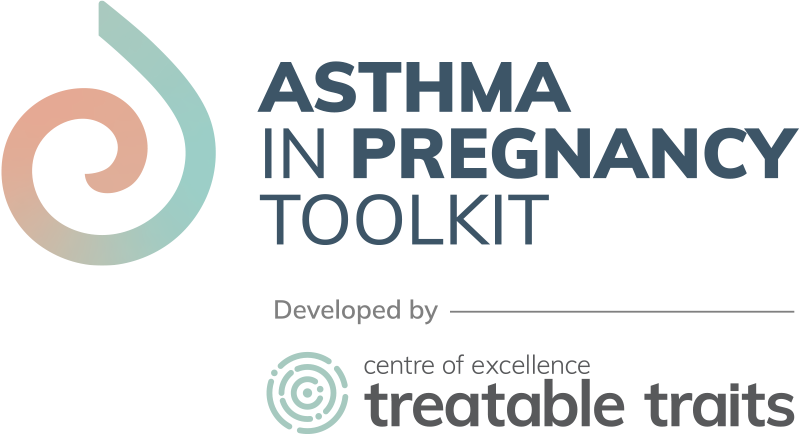Overview

Data from Australia’s mothers and babies report – The Australian Institute of Health and Welfare (last updated December 2021).
How you deliver health care can be as important as what you deliver.
Delivering health care in pregnancy particularly to those women with underlying medical conditions, such as asthma, can be difficult due to the wide range of demographics amongst mothers and maternity services available. Local circumstances need to be considered when developing a model of care to address the five aspects of asthma management in pregnancy. There is not one model suitable for all health services.
Guidelines for asthma management during pregnancy indicate that the following key aspects should be addressed for pregnant women with asthma (McLaughlin et al. 2018):
- Regular review of asthma symptoms and lung function every 4-6 weeks
- Provision of self-management education including correction of inhaler technique and provision of a written asthma action plan
- Prescription of medications as required (controller medications should not be withdrawn due to pregnancy)
- Advice given around control of asthma triggers and co-morbidities that may affect asthma (including smoking, allergic rhinitis and others)
- Communication between health professionals involved in the woman’s care
Pregnancy and asthma care are provided by a wide range of health professionals depending what services are available locally. This may include general practitioners, midwives, nurses, obstetricians, physicians, and allied heath staff.
There is no one answer to the question of which model of care is the best to use to deliver asthma management in pregnancy. It will depend upon many issues such as patient demographics, level of maternity and medical services at hand, geographical location and resources.
The following pages are national and international examples of how asthma care in pregnancy can be delivered depending upon local circumstances.
